9 Types of Grass in Georgia – Top Choices for Your Lawn (With Pictures)
-
Pete Ortiz
- Last updated:
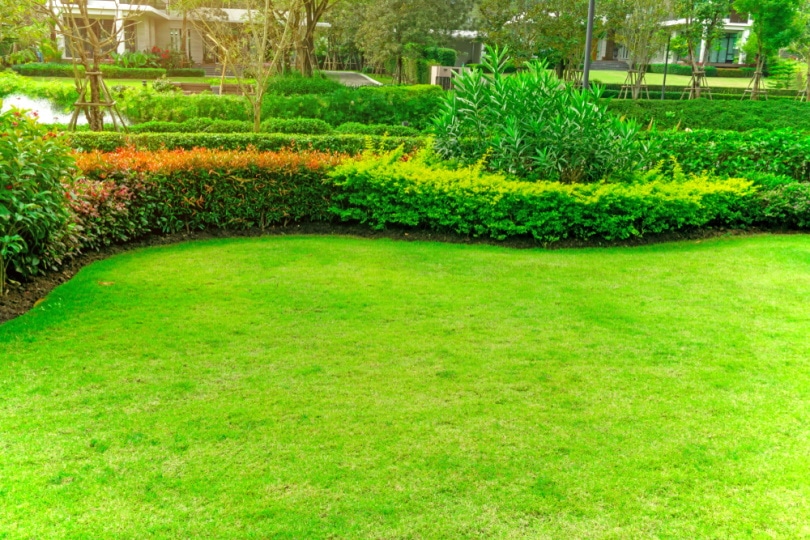
A well-kept lawn is a foundation for quality landscaping. While you may be able to skate by with a dying flower plant or overgrown hedge, it’s almost impossible to overcome patchy, withered, or downright ugly grass.
If there’s room for opportunity on your lawn, starting fresh with brand new turf can enhance every backyard affair and improve your home’s curb appeal. Get started on revitalizing your landscaping by learning about the best types of grass for Georgia lawns.
Growing Grass in Georgia
Georgia may be a warm-weather state, but it contains a diverse range of growing climates. The state spans from USDA hardiness zone 6b in the northern regions to 9a in the southeast corner on the coast. Depending on where you live, some types and blends of grass will perform better than others.
Grasses are either warm-weather or cool-weather. Warm-weather grasses thrive in warm, dry summer periods when temperatures stay above 65°F before going dormant in the fall. By contrast, cool weather grasses do best in areas with higher humidity and temperatures between 60°F and 70°F. Unlike warm-weather grasses, these come to life in the spring and fall months.
While much of Georgia exists in the warm-weather zones, northern mountainous regions exist in the transitional zone where both cold-weather and warm-weather grasses grow. That affords many Peach State residents a rare opportunity to create a lush, healthy backyard almost year-round. Although you may have to stick with warm-weather grass in Brunswick, you can overseed with cool-weather grass on your Atlanta, Athens, or even Augusta lawns, giving three whole seasons of rich growth.
The 9 Types of Grass in Georgia: Top Choices for Your Lawn
Your region may accept an array of cool or warm-weather grasses, but it’s crucial to consider the use and layout of your lawn. Although two kinds of grass may be warm-weather varieties, one may be resilient against pet damage while the other might be softer and more comfortable for the kids. We’ll discuss the nine best types of grass for your Georgia lawn based on climate and explain some other unique benefits of each one.
1. Bermuda
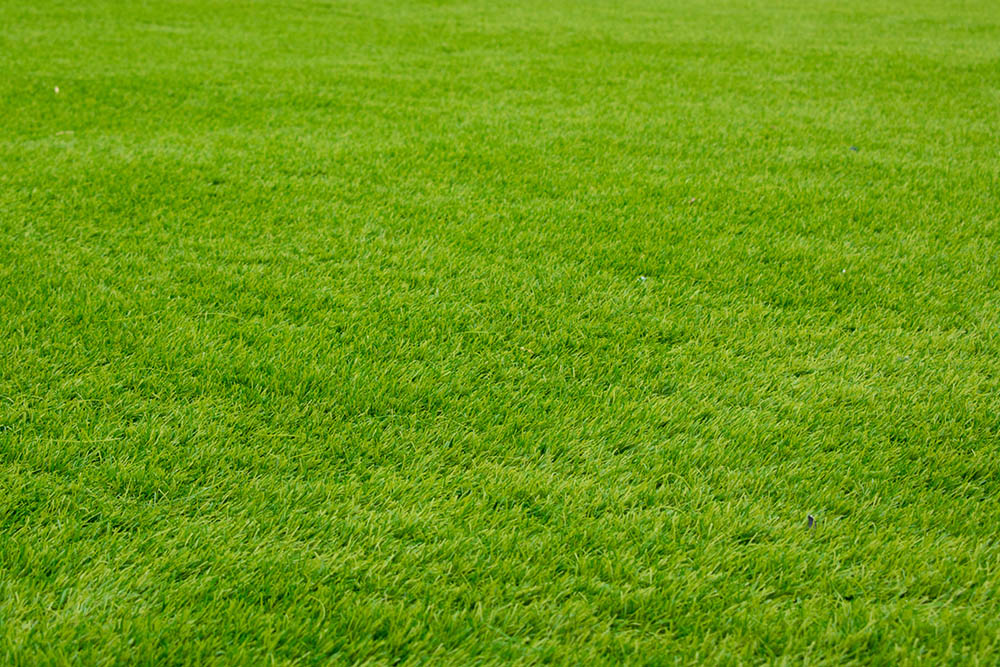
| USDA Hardiness Zone | 7–10 |
| Season | Warm |
| Sun exposure | Full sun |
| Water needs | Moderate |
Bermuda grass is an ideal option for Georgia lawns as it thrives in zones 7–10, right where the state lies. It handles heat and drought well, perfect for open stretches of grass that see lots of direct sunlight. Some varieties, such as Yukon, are hardier to cold temperatures and able to stay green in zones 5 and 6, so you can use it with confidence even in the chillier mountain regions of the state.
A preferred variety for parks, golf courses, and home lawns in Georgia, Bermuda grass keeps its appearance by healing fast and withstanding heavy traffic. It grows through runners, creating a dense carpet of fine-medium textured blades in little time. It needs regular mowing and fertilizing to maintain, but it only requires 1–2” of water a week to keep its dark green color in the spring and summer months.
2. Zoysia

| USDA Hardiness Zone | 5–10 |
| Season | Warm |
| Sun exposure | Full |
| Water needs | Moderate |
Zoysia is slower to establish than many other types of grass, but the soft feeling underfoot and thick, light-green cover make it a popular go-to for golf courses and backyards alike. Like Bermuda grass, it develops the plushest mat under full sun and can withstand drought, only needing about an inch of water per week.
You can plant Zoysia grass anywhere in the state. Its hardiness in the cold makes it suitable for northern areas, and its mild salt tolerance lets it grow on the coast. Although it can survive cold weather, it will become dormant when frost arrives. It may also require regular dethatching to remove dead, decomposing grass, especially if you over-fertilize it.
3. Centipede
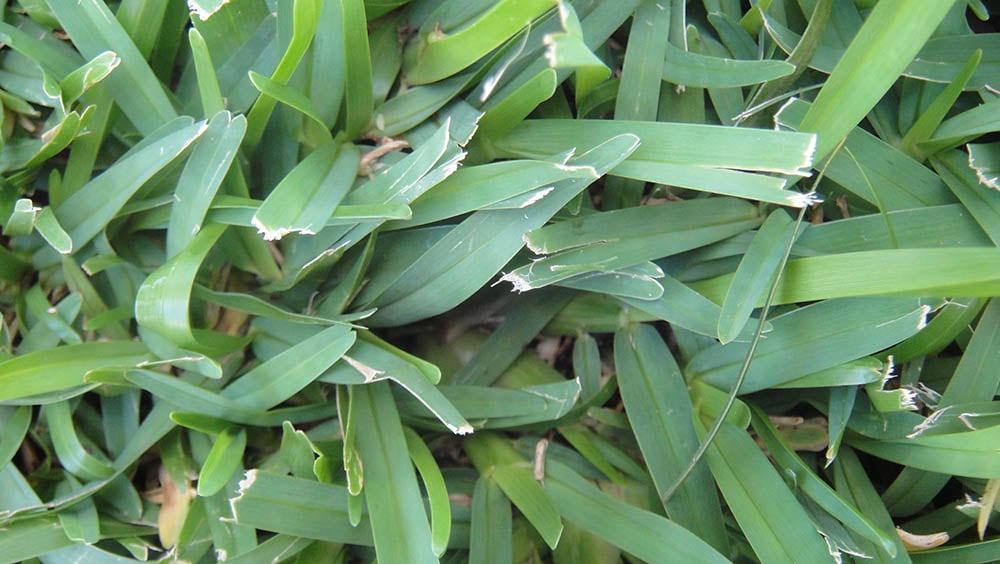
| USDA Hardiness Zone | 7–10 |
| Season | Warm |
| Sun exposure | Full sun |
| Water needs | Moderate |
Centipede is a creeping grass that distinguishes itself from other warm-weather grasses in several ways. It doesn’t brown or become dormant in cold weather, meaning you may enjoy a green lawn all year in more mild parts of the state. Extended cold spells can kill it, and it can’t tolerate salty or alkaline soil, but it will work fine in most areas around Georgia.
Although it’s low-maintenance, centipede grass’s coarse texture and dull coloration are notable drawbacks. Its slow growth makes it less practical for heavy traffic areas that need fast-healing grass. But you may appreciate the slow growth since it means you won’t have to mow as often.
4. St. Augustine
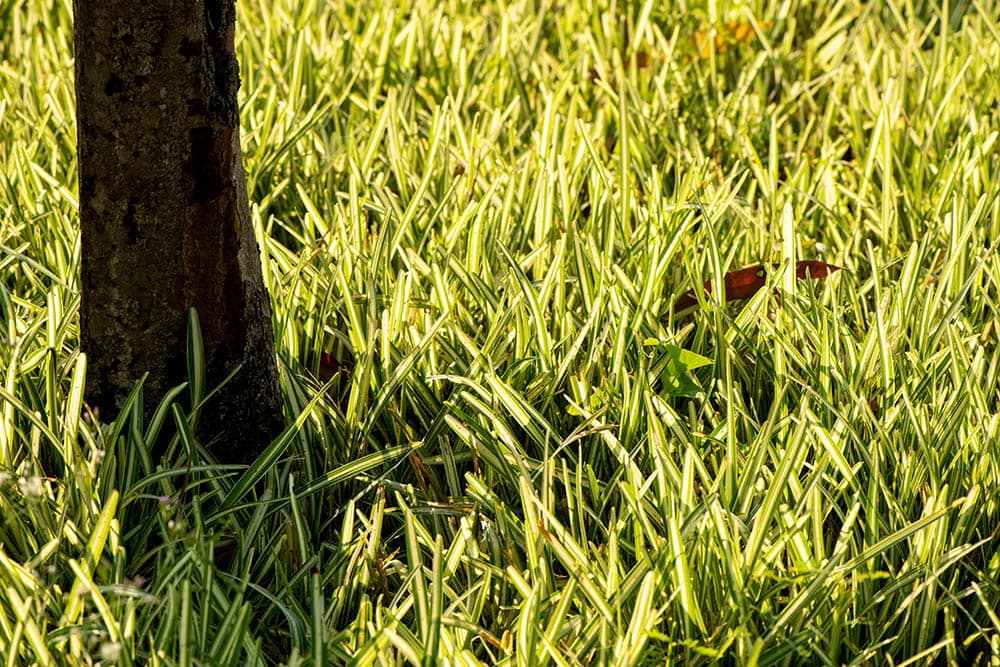
| USDA Hardiness Zone | 8–10 |
| Season | Warm |
| Sun exposure | Full/partial |
| Water needs | Moderate |
St. Augustine consists of wide, flat blades in an attractive blue-green hue. It grows quickly via stolons(runners), forming a dense mat that can heal fast from the abuse of children and pets. The rapid growth means you’ll have to mow it weekly, but it only requires about 1 inch of water a week and fertilizing once every 2 months.
In many parts of Georgia, St. Augustine is the best grass to use because it handles heat and humidity so well. It tolerates salty and moist soil, making it a go-to choice for southern coastal regions, and it can grow under shade better than many grass varieties. But in northern areas above Atlanta, St. Augustine’s relatively low cold tolerance makes it a poor choice.
5. Fescue
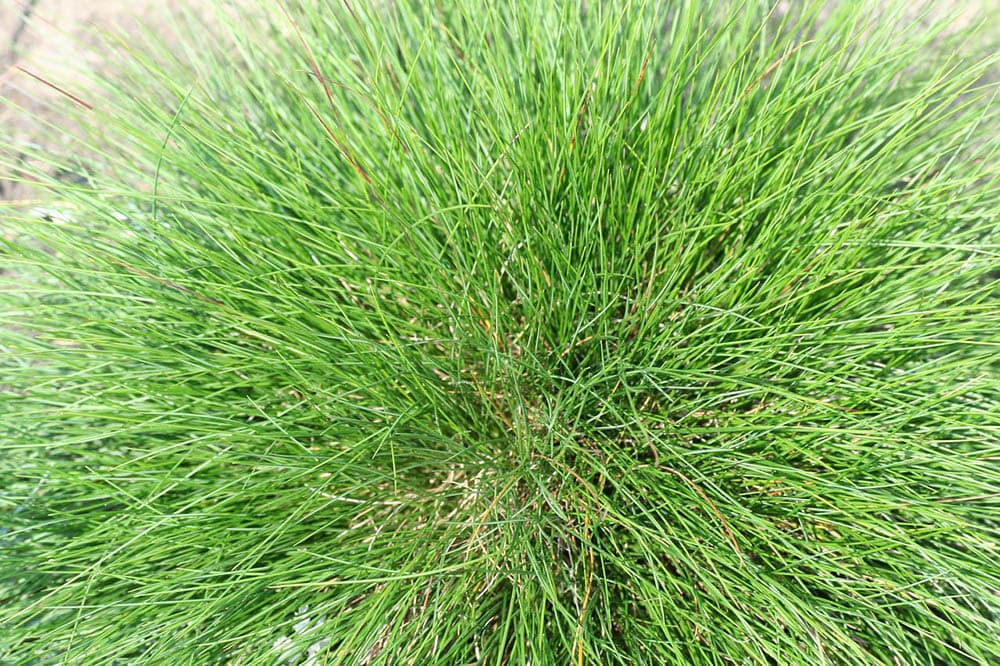
| USDA Hardiness Zone | 3–7 |
| Season | Cool |
| Sun exposure | Full/partial |
| Water needs | Moderate |
Tall or creeping red fescue are excellent varieties to alternate with warm-season grasses like zoysia, ideal if you want to maintain a lush lawn longer in Georgia. An easy-going grass, fescue has good heat and drought tolerance, and you can keep it in areas of full sun or partial shade without worry.
Fescue grows in clumps, so it’s easy to contain. It handles nitrogen with ease, making it the best grass for dog urine, and its durability places it among the toughest grasses for heavy foot traffic. It has higher watering demands than some other grasses, but you generally won’t have to worry about it holding up in adverse conditions.
6. Buffalo Grass
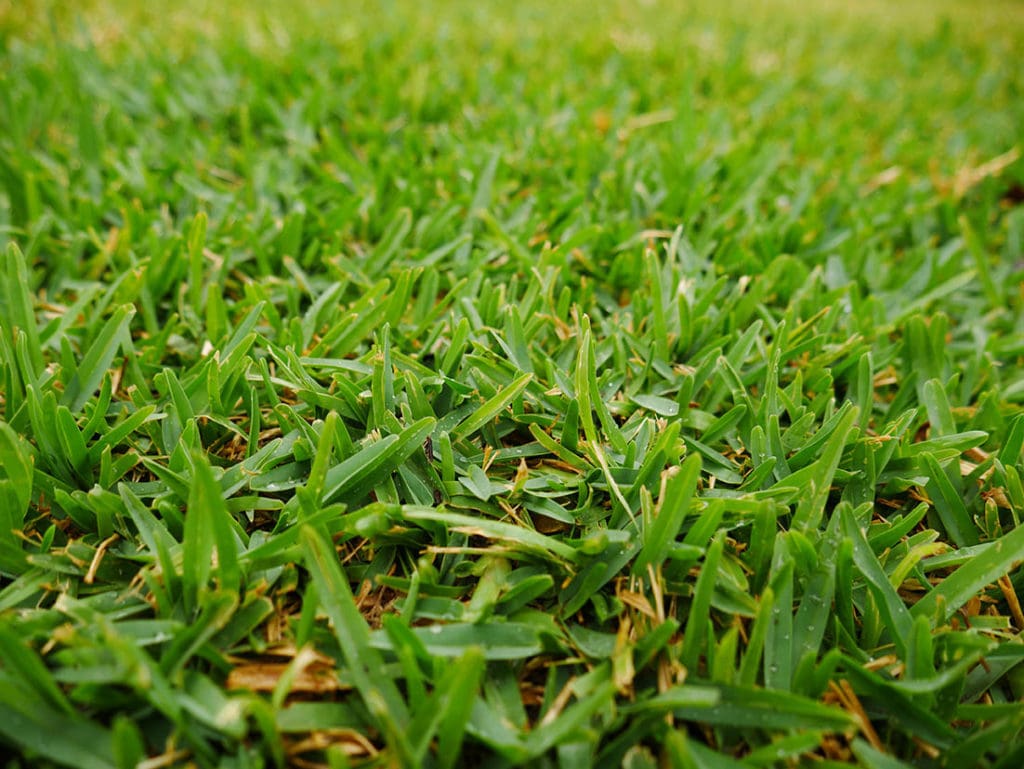
| USDA Hardiness Zone | 4–8 |
| Season | Warm |
| Sun exposure | Full/partial |
| Water needs | Moderate |
Buffalo grass is native to North America, a warm-season grass that can handle diverse growing conditions. It forms a dense mat of fine-textured blades that feel soft underfoot, and the bluish coloration is appealing. While it may fall victim to weeds, requiring infrequent treatment, it only needs moderate watering and mowing once a week.
7. Carpet Grass
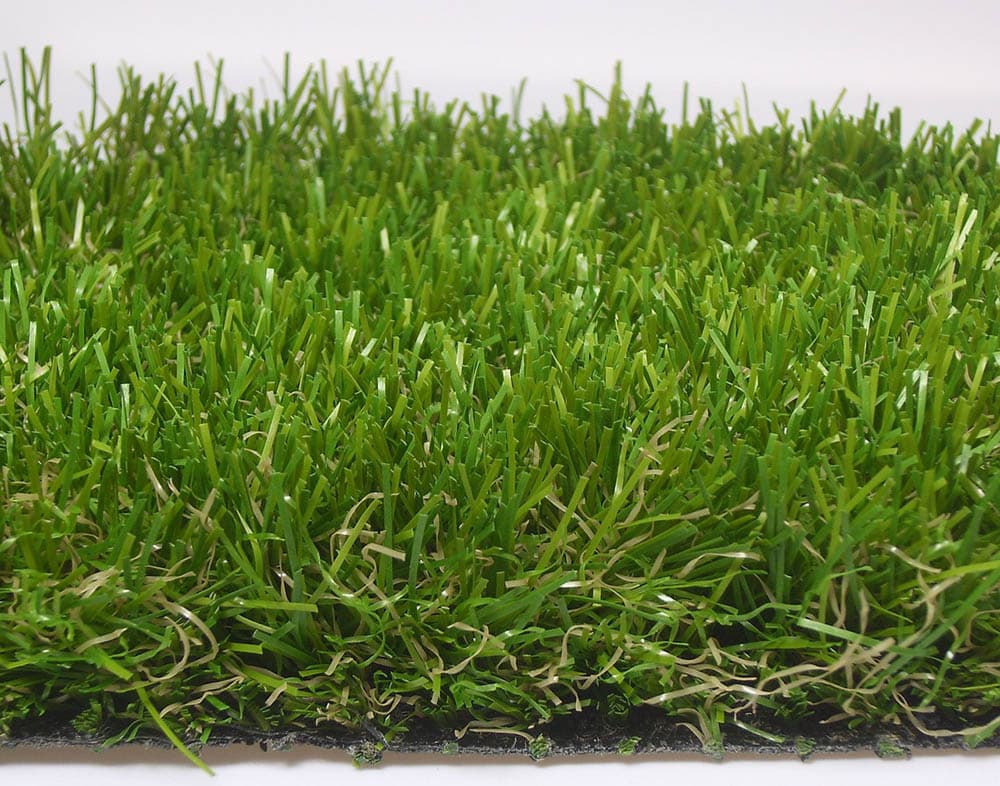
| USDA Hardiness Zone | 7–10 |
| Season | Warm |
| Sun exposure | Full/partial |
| Water needs | Moderate |
Carpet grass’s coarse texture isn’t the most comfortable underfoot, but its unique growing habits make it one of the best types of grass for Georgia. It thrives in warm areas from zones 7 to 10, growing its best when it gets consistent water. If you have a moist area of your lawn that drains slowly, low-maintenance carpet grass is the perfect filler.
8. Kentucky Bluegrass
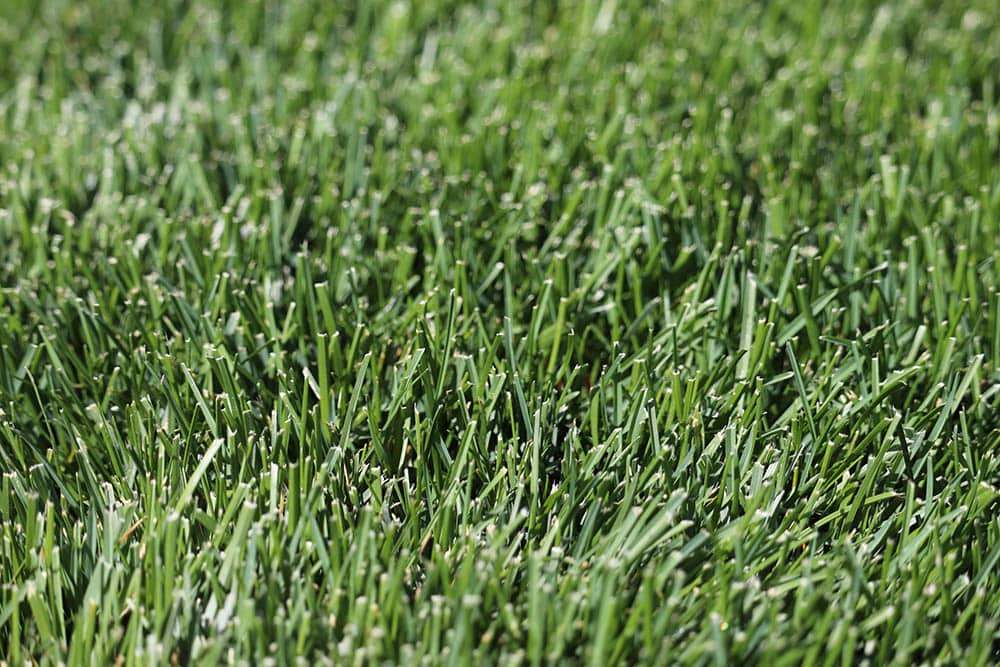
| USDA Hardiness Zone | 4–6 |
| Season | Cool |
| Sun exposure | Full/partial |
| Water needs | Moderate |
With its rich blue-green hues, Kentucky bluegrass is one of the most attractive grasses to include in your lawn. As a cool-season grass, it grows best in the transition zone to the north, but you can find hardy varieties that can stand more intense heat. Beautiful, durable, and soft underfoot, it’s a great choice for backyards that see lots of activity.
Kentucky bluegrass needs healthy amounts of shade to flourish. And although it’s tolerant of some drought, it needs more frequent watering as the temperature goes up.
9. Seashore Paspalum
| USDA Hardiness Zone | 8–11 |
| Season | Warm |
| Sun exposure | Full/partial |
| Water needs | Low |
The tropical/subtropical Seashore paspalum grass is one the best grasses for the Georgia coast thanks to its high salt tolerance. It can take a couple of months to establish, and it will require frequent watering as it germinates, but it’s easy to maintain once it fills in. It’s slightly coarser than Bermuda grass and forms a dense mat ideal for golf courses and various types of turf.
Final Thoughts
Georgia features a more diverse array of climates than many people realize. When picking out the grass for your lawn, it’s crucial to understand the characteristics of your weather and soil conditions to make the best choice. No matter where you live, you’ll have several practical options to consider. By starting with these nine top choices for Georgia, you’ll be sure to enjoy lush, long-lasting grass in your backyard.
See Also:
- 8 Types of Grass in Ohio – Top Choices For Your Lawn (With Pictures)
- 5 Types Of Grass In Michigan – Top Choices for Your Lawn
Featured Image Credit: aimful, Shutterstock
Contents


